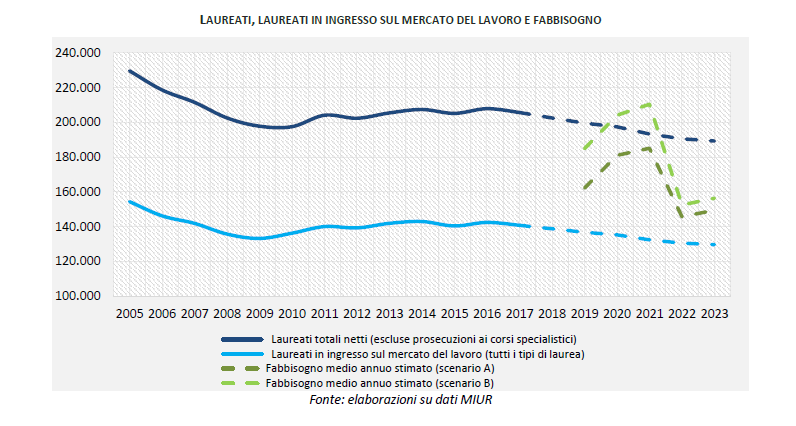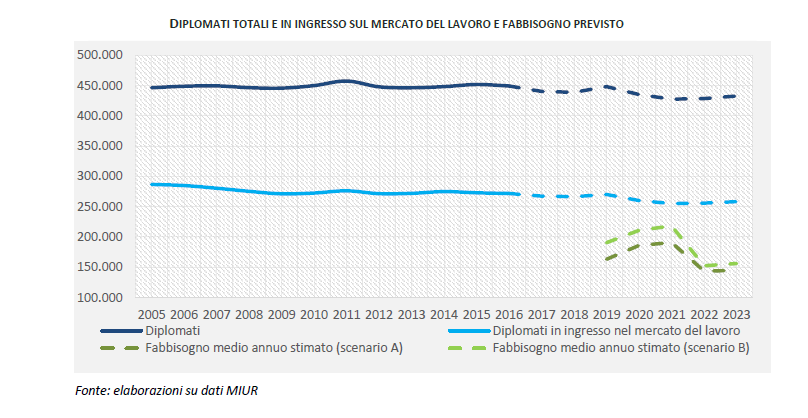This section will focus on the matching demand and supply in quantity within WET.
This section will provide answers to the following questions:
- How to use vacancies figures?
- How to predict the future with limited data?
- How to find drivers for the development?
The matching of the demand and supply can be more or less perfect, but require in all cases a close communication, cooperation and collaboration between the different stakeholders both on the supply and demand side.
In the context of matching demand and supply in quantity, the national report on the hospitality sector in the UK exemplifies some good practice (see below).
Good practice. The Hospitality Sector in UK
- A total of 73,000 vacancies were reported across the sector; a quarter of these (18,243) are hard to fill and further 15% (11,178) are skills shortages vacancies.
- In terms of recruitment issues, 32,700 establishments (15% of all sector establishments) have vacancies; 5% report hard to fill vacancies, with 3% reporting skills shortage vacancies.[1]
Source: WP4 The National Report – UK - 2020
The number of vacancies is a good indicator for a (mis)match between supply and demand in a sector and hopefully outlines the importance of being aware of the estimate number of vacancies in your sector.
The national reports, the interviews and our research showed that the following questions were raised in relation to establishing the match in quantity:
- At what level do we search for match? sectoral, local, regional, national or international?
- Who shall be involved in the match of demand and supply?
- What is education for? To serve the needs of the labour market or to serve the interests of the students? Or the VET providers? Or?
These questions can inspire you to search for the answers together with other stakeholders.
How to predict the future with limited data?
The National Report from Sweden outlines some important trends that will influence the educational landscape, as the good practice below shows
Good practice: The Swedish Electrician sector
Conclusion
Without the statistics to prove it, there is no shadow of a doubt about the relevance of this VET programme for this part of the labour market. It is more than evident!
Solving the shortage of students and graduates implies retaining more students for the sector (for instance by being keen on preventing drop-outs) but also recruiting more students/apprentices (for instance by focussing on new target groups like girls/women, newcomers and side entrants. It will however need a very good marketeer to actually close the current quantitative gap between demand and supply!
Source: WP4 National Report – Sweden 2020
It will often be the case that you might not have access to the detailed data, but at least you are aware of the main issues. This good practice from Sweden can inspire you to find a way to handle the situation, when you have the overall picture and conclusions but still miss many of the details.
The national reports, the interviews and our research showed that the following questions were raised in relation to implementation of the match in quantity:
- How to match demand and supply?
- When to match demand and supply?
- How and why are the quantity of students regulated? Ministerial admission quotients, number of student places, (un)employment expectations, provider regulations, sectoral regulations
- How do you assure the quantities of labour demand?
- How do you assure the quantities of VET supply?
- How do you assure to match the demand and supply?
- How do you secure having sufficient statistical data to match labour demand with VET supply?
These questions can inspire you to search for the answers together with the other stakeholders.
Very few of the National Reports present an overview of the past supply and demand for students including estimates for the future. The national report from the Italian Finance and Bank sector is an example of good practice in this regards (see below).
Good practice: The Italian Finance and Bank sector
SISTEMA INFORMATIVO EXCELSIOR –
MID-TERM PROVISION OF OCCUPATIONAL AND PROFESSIONAL NEEDS (2019-2023)
Graduates (blue), Graduates accessing the labour market (light blue) and needs (green)

Total of school graduates (blue), school graduates accessing the labour market (light blue) and expected needs (green)

Source: WP4 National Report – Italy 2020
The expected demand in the Italian Financial and Banking sector seem to be less than the expected supply of graduates, which will lead to a potential mismatch in the sector.
How to find drivers for the development?
Another example - the national report on the hospitality sector in the UK describes the drivers behind culinary careers and how to work with this.
This very honest account of why students end up in a career in a certain sector can inspire you to search for the drivers in your sector.
Good practice. The Hospitality Sector in UK
The report ‘Kitchen Talent’ highlights the fact that too often, young people in particular end up in culinary careers for lack of “better” options. In order to address skills shortages and cultivate local talent, London must inspire more children and young people to want to work as chefs, but also, the City needs to improve its culinary training offer. However, as the report goes on to say, the landscape of skills provision is complex and changing; responsibilities are shared between the government, which decides on policy and funding; regulators, who ensure quality of provision; and the many providers of curses and training.
Good practice. The Hospitality Sector in UK
According to ‘Backing the Future for Hospitality’ report, one third of the Hospitality Sector’s workforce is under 25 years of age, compared to 12% in the economy as a whole, hence, our focus on youth employability within the sector. The British Hospitality Association has, over the last three years, run a nationwide campaign – The Big Hospitality Conversation – linking the young/young unemployed with businesses.
The Skills Funding Agency/European Social Fund project ‘Pan Out’ where employers and schools collaborated to change the way young people, teachers and parents view job and career opportunities in the Hospitality and Catering Sector.
Finally, the campaigns and resources produced by the UKH (UK Hospitality), which is recognized as a powerful voice representing the broad Hospitality Sector along with the report ‘Kitchen Talent: Training and Retraining The Chefs of the Future, by authors Nicolas Bosetti and Mario Washington-Ihieme (published by the Centre for London, April 2019) are extensively drawn upon as combined they provide the most contemporary insights on the training needs of the sector. Both use a mix of research methods that are complimentary to QSE-VET approach, for example:
- Data on London Chefs was sought from the Office for National Statistics and Job Search websites;
- The CODE hospitality survey and a review of existing literature, along with new data provided by the Department for Education.
- 30 Interviews with London Chefs and other industry experts, including Catering Colleges.
The Kitchen Talent: Training and Retraining the Chefs of The Future report, as well as being produced by the Centre for London (Think Tank) was supported by The Savoy Educational Trust, for example, and expert advice and guidance from an established Advisory Group.
Source: WP4 The National Report – UK - 2020
It is difficult to find the answers to how to match demand and supply in quantity. It is our hope that the different good practices presented above will be helpful. We plan to work even further with the challenges related to matching demand and supply and will focus on, how to minimize the gap. This will be done in the next round of projects.
| Previous | Next |





